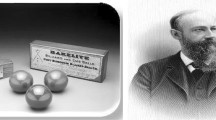Abstract
Cellulose acetate (CA) films with degree of substitution (d.s.) values of 1.7 and 2.5 were exposed to biologically active in-laboratory composting test vessels maintained at approximately 53 °C. The CA 1.7- and 2.5-d.s. films (thickness values of ∼0.5–1.0 and 2.0 mil, respectively) had completely disappeared by the end of 7- and 18-day exposure time periods in the biologically active bioreactors, respectively. The relatively small CA film weight loss observed in the poisoned control test vessels allows the conclusion that CA film erosion during the composting exposures resulted, at least in part, from biologically mediated processes. Under strictly anaerobic conditions, an active methanogenic inoculum was developed by acclimation of a sewage sludge to a synthetic municipal solid waste (SMSW) mixture at 42°C. The CA 1.7-d.s. film samples (0.5- to 1.0-mil thickness) were exposed in anaerobic serum bottles containing a 25% solids loading of SMSW in which methanogenic activity was rapidly established after introducing of the developed inoculum. For exposures of 30 days only small visually distinguishable fragments of the CA 1.7-d.s. films were recovered. In contrast, exposure of the CA 1.7-d.s. film to a poisoned control test vessel resulted in negligible weight loss. Therefore, degradation of the CA 1.7-d.s. films upon exposure to the anaerobic bioreactors was due, at least in part, to biologically mediated processes.
Similar content being viewed by others
References
G. B. Willson and D. Dalmat,BioCycle 24 20–23 (1983).
J. Glenn and R. Spencer, inBioCycle 32 34–84 (1991).
J. H. Crawford, inBiotechnology: Applications and Research, P. N. Cheremisinoff and R. P. Ouellette, ed. (Technomic, Lancaster, PA, 1985), pp. 68–77.
R. E. Hungate,Method. Microbiol. 3B 117–132 (1969).
B. Schink, inBiology of Anaerobic Microorganisms, A. J. B. Zehnder, ed. (John Wiley and Sons, New York, 1988), pp. 771–846.
C. R. Woese,Microbiol Rev. 51 221–271 (1987).
M. T. Wolin and T. L. Miller, inBiology of Industrial Microorganisms, A. L. Demain and N. A. Solomon, eds. (Butterworths, Boston, 1985), pp. 189–221.
J. G. Ferry,J. Bacteriol. 174 5489–5495 (1992).
W. Gujer and A. J. B. Zehnder,Wat. Sci. Technol. 15 127–167 (1983).
M. A. Barlaz, D. M. Schaefer, and R. K. Ham.Appl. Environ. Microbiol. 56 56–65 (1989).
G. P. Smith, B. Press, D. Eberiel, R. A. Gross, S. P. McCarthy, and D. L. Kaplan,Polym. Mat. Sci. Eng. 63 867–871 (1990).
G. P. Smith, B. Press, D. Eberiel, S. P. McCarthy, R. A. Gross, and K. L. Kaplan,Polym. Mat. Sci. Eng. 63 862–866 (1990).
J. M. Suflita, C. P. Gerba, R. K. Ham, A. C. Palmisano, W. L. Rathje, and J. A. Robinson,Environ. Sci. Technol. 26 1486–1495 (1992).
M. Z. A. Khan and Z. H. Abu-Ghararah,J. Environ. Eng. 117 376–380 (1991).
E. T. Reese,Ind. Eng. Chem. 49 89–92 (1957).
K. M. Downing, C. S. Ho, and D. W. Zabriskie,Biotechnol. Bioeng. 29 1086–1096 (1987).
H. Lee, R. J. B. To, R. K. Latta, P. Biely, and H. Schneider,Appl. Environ. Microbiol. 53 2831–2834 (1987).
O. Fuchs, inPolymer Handbook, J. Brandrup and E. H. Immergut, eds. (John Wiley & Sons, New York, 1989) pp. VII/400.
E. Luthi, N. B. Jasmat, and P. L. Bergquist,Appl. Microbiol. Biotechnol. 34 214–219 (1990).
C. Buchanan, R. M. Gardner, and A. White, presented at the Conference on Biodegradable Materials and Packaging, Natick, MA, June (1992).
R. A. Gross, J.-D. Gu, D. T. Eberiel, M. Nelson, and S. P. McCarthy, inFundamentals of Biodegradable Materials and Packaging, D. Kaplan, E. Thomas, and C. Ching, eds. (Technomic, Lancaster, PA, 1992).
M. Nelson, S. P. McCarthy, and R. A. Gross,Polym. Mat. Sci. Eng. 67 139–140 (1992).
J.-D. Gu, S. P. McCarthy, G. P. Smith, D. Eberiel, and R. A. Gross,Polym. Mat. Sci. Eng. 67 230–231 (1992).
J.-D. Gu, M. Gada, G. Kharas, D. Eberiel, S. P. McCarthy, and R. A. Gross,Polym. Mat. Sci. Eng. 67 351–352 (1992).
H. B. Goatoas,Composting Sanitary Disposal and Reclamation of Organic Waste (World Health Organization, Geneva, 1966).
Anonymous,J. Water Pollut. Control Fed. 36, 1479–1481 (1964).
K. Gocke and H. G. Hoppe, inMicrobial Ecology of a Brackish Water Environment, G. Rheinheimer, ed. (Springer-Verlag, New York, 1977) pp. 61–70.
A. M. Fogarty and O. H. Tuovinen,Microbiol. Rev. 55 225–233 (1991).
P. F. Strom,Appl. Environ. Microbiol. 50 899–905 (1985).
R. T. Haug and W. F. Ellsworth,BioCycle 32 56–62 (1991).
D. J. Suler and M. S. Finstein,Appl. Environ. Microbiol. 33 345–350 (1977).
T. D. Brock,Appl. Microbiol. 29 495–501 (1975).
W. G. Glasser, B. K. McCartney, and G. Samaranayake, Presented at the American Chemical Society meeting. Washington, DC, Aug. (1992).
E. Senior and M. T. M. Balba, inMicrobiology of Landfill Sites, E. Senior, ed. (CRC Press, Boca Raton, FL, 1990), pp. 17–58.
P. L. McCarty,Public Works Sept., 107–112 (1964).
S. Soundar and T. S. Chandra,J. Indust. Microbiol. 2 257–265 (1987).
S. Soundar and T. S. Chandra,J. Indust. Microbiol. 5 269–276 (1990).
R. B. Hespell and P. J. O'Bryan-Shah,Appl. Environ. Microbiol. 54 1917–1922 (1988).
Author information
Authors and Affiliations
Additional information
Guest Editor: Dr. Graham Swift, Rohm & Haas.
Rights and permissions
About this article
Cite this article
Gu, JD., Eberiel, D.T., McCarthy, S.P. et al. Cellulose acetate biodegradability upon exposure to simulated aerobic composting and anaerobic bioreactor environments. J Environ Polym Degr 1, 143–153 (1993). https://doi.org/10.1007/BF01418207
Issue Date:
DOI: https://doi.org/10.1007/BF01418207




